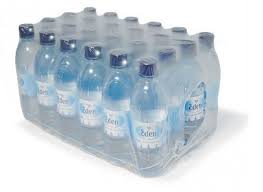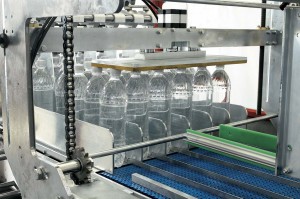When the time comes to make a final decision about the right shrink wrapper for your facility, there are a number of things that you need to consider. Here are the top 9 things to think about before making the final decision.
- Look to down gauge. The use of polyethylene and similar thin films is a huge cost-cutting opportunity. Fifty percent of customers use heavier gauge film than they need. Why? A thicker gauge buys a lot of “forgiveness,” allowing companies to get away with sloppier setup, less efficient machines, and less competent operators. Premium films are being used to accommodate these shortcomings. While down gauging involves a lot of work, it can pay off. Instead of using a film that costs $4 a pound, you can use one that costs $0.71 a pound with the right machine. In fact, film suppliers are producing better-quality, inexpensive, thin films.
- Identify the right technology platform, especially if it’s a new process for the business. See what your product and distribution environment can handle. Rigid containers such as metal cans easily transition from a tray to a pad. But what if you’re dealing with a 3-ounce plastic bottle with an hourglass shape? Be very careful and do a lot of testing to see if it’s even possible to move from a tray to a pad to an overwrap. Shrink-only packs will obviously save corrugated costs, but such a move requires foresight and planning to ensure package integrity with package development experts.
- Speed matters. The speed at which you’re wrapping is a key parameter. The number of products remains on the upside of the growth curve; consider this as you examine potential equipment. While there are no hard and fast rules, the impact of product development on speed cannot be ignored

- Size matters, as well. Pay attention to the length of the shrink tunnel. Don’t undersize it. Film takes a certain amount of time to heat up and shrink. Selecting shorter heat tunnels with higher heats is not good logic. For higher speeds, tunnels can become long and are often a target for footprint reduction. Tunnels with small chambers have a tendency for hot spots that can result in poor packages.
- Look for shrink tunnels with lower air velocity. Tunnels with high velocity airflow can disturb the film causing more wrinkles.
- Storage and handling issues are important. For shrink film, proper storage is essential. Are film roll tolerances within specifications (e.g., tension consistency, minimum edge curl)? Pay attention to what the equipment incorporates to manage film tension and consistency features such as vacuum control for film edges.
- Don’t shirk on capacity. Flexible robotics requires extra capacity; have one or two extras so, if one machine fails, your whole line isn’t down. Designing in excess packing capacity can improve overall uptime.
- Consider the ultimate environment and display. If a product is affected by temperature, case packing is preferable to shrink wrapping. If product visibility is important, shrink packing is better, unless the product is affected by shrink wrapping pressure.
- The machine must have flexibility. Flexible materials are having an impact on multi-packing. Certain flexible bags cannot be shrink wrapped because they are prone to distortion; otherwise the shrink bundle could be fused onto the primary packaging.
Working with an experienced distributor can help you find the right machine for your needs. You have questions; we have answers. Call us today.


